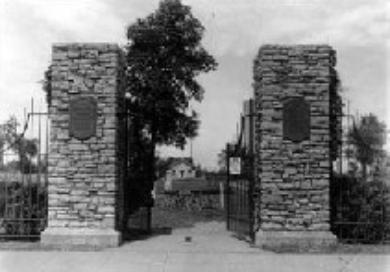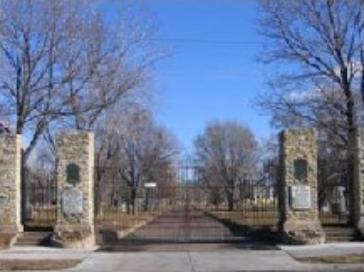Overview
Layman’s Cemetery is the oldest surviving cemetery in Minneapolis and contains the graves of a wide variety of early settlers, veterans, and immigrants.
- Location: 2925 Cedar Avenue
- Neighborhood: East Phillips
Guidelines
| 1936 | 2006 |
|---|---|

|

|
Layman’s Cemetery is the oldest surviving cemetery in Minneapolis and contains the graves of a wide variety of early settlers, veterans, and immigrants.
| 1936 | 2006 |
|---|---|

|

|
Layman’s Cemetery is the oldest surviving cemetery in Minneapolis and contains the graves of a wide variety of early settlers, veterans, and immigrants. It is also known as the Pioneers and Soldiers Memorial Cemetery. Layman's Cemetery was founded in 1853 on land next to the farmstead of Martin Layman.
The cemetery is in the churchyard style. This style is practical and symmetrical, with closely spaced graves in a grid pattern. Lanes between the graves were accessible and lined with trees.
It is the final resting place of 20,000 settlers, veterans and immigrants, although only about 1,800 markers remain. It contains the graves of early Minneapolis residents, and soldiers and veterans of:
The cemetery was not segregated although this was common practice at the time. Around the time of the Civil War, New England abolitionists and Black Americans fleeing slavery came to Minnesota in search of greater freedoms. These residents are also buried in Layman's Cemetery. The cemetery's last addition opened in 1886. These sites are predominantly German and Scandinavian immigrants.
Notable individuals buried in the cemetery include:
By 1920, burials decreased and plots were neglected. There was pressure to move the graves and develop the site. In 1925, a group began to organize to save Layman’s Cemetery for its historical importance. The group’s effort is recognized as an early, local attempt at historic preservation. In 1942, a monument to Charles W. Christmas was installed by the newly organized Hennepin County Historical Society. This was the last significant addition to the site.
Jeffrey L. Adams and Marjorie Pearson, "Minneapolis Heritage Preservation Commission Registration Form: Layman's Cemetery," 2005
Community Planning & Economic Development (CPED)
Phone
Address
Public Service Building
505 Fourth Ave. S., Room 320
Minneapolis, MN 55415